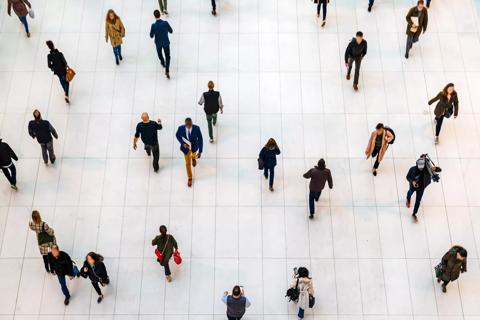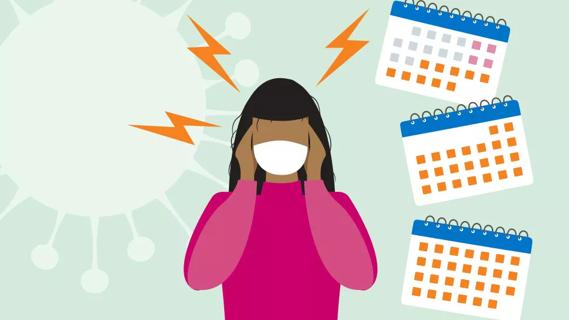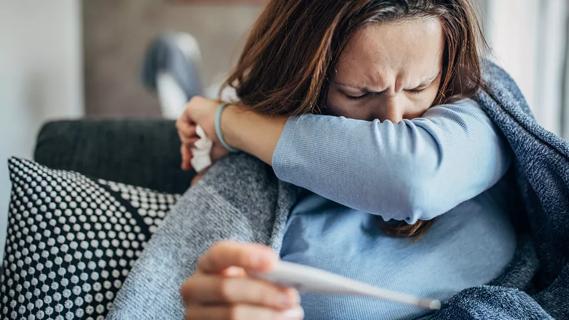Helpful tips for keeping employees and customers safe

COVID-19 has significantly altered our personal and professional lives. If you own a small business, you’ve definitely felt the strain. Instead of just focusing on providing products or services, you now have to fold in strategies for keeping employees and customers safe. It’s challenging, especially when things are changing daily. Fortunately, there are resources available to help keep your employees and customers safe so your business can still thrive despite COVID-19’s existence.
Cleveland Clinic is a non-profit academic medical center. Advertising on our site helps support our mission. We do not endorse non-Cleveland Clinic products or services. Policy
The CDC has created a helpful guide for workplaces and businesses and a team of Cleveland Clinic experts, including infectious disease, occupational health, nursing, and operations team members, developed a series of free, industry-specific guides, tools and webinars to help employers keep workers and those they serve protected from COVID-19. With the help of these resources and James Merlino, MD, Chief Clinical Transformation Officer, we’ll cover some effective strategies that can help make things less stressful on the job.
Disinfecting high-touch surfaces and frequently used spaces is instrumental in slowing the spread of COVID-19 as well as other viruses and germs. When it comes to cleaning the workplace, you’ll want to develop a plan that’s easy for everyone to understand and follow. To make sure things go smoothly, utilize visual aids like charts, checklists or posters. You’ll also want to keep the right cleaning supplies on-hand.
The approach to cleaning can be broken down into three parts.
If you own a store, your cleaning routine is going to look a little different since you most likely have more foot traffic. Here are some things you can do to keep employees and customers safe.
COVID-19 has changed how we navigate public spaces. Workplaces are no exception. If you’re still trying to adjust, keep these tips in mind
While it might seem like common sense, this is worth repeating — tell customers to not to enter your store if they have symptoms of COVID-19. Also, to strongly reinforce physical distancing, use signage throughout the store to prompt and reinforce space guidelines.
To keep your employees on-board, remind them of your commitment to keeping everyone safe by placing signs near the entrance, check-out area, on the sales floor and in break rooms. These signs should also include friendly reminders to wash hands frequently, wear masks, physical distance and use proper cough etiquette.
With cases on the rise, it’s inevitable — some of your employees are going to be exposed to the coronavirus or even test positive for it. To keep everyone safe, be sure to have the management team and workers monitor for symptoms of COVID-19.
They include:
Remember that the symptoms aren’t always severe. With a majority of cases (around 80%) patients experienced mild symptoms.
Some people have a tendency to still show up at work when they’re sick. In the event that a team member does come to work with symptoms of COVID-19 or starts to get sick at work, you or your management team will need to act quickly.
Start by separating the employee from other employees and customers. Then, advise them to go home and contact their healthcare provider for next steps (testing, home care protocol, etc.). Once they’ve left, block off all areas that were used by the sick employee until they can be thoroughly cleaned. When it comes to cleaning and disinfecting these areas, refer to the CDC’s guidelines for cleaning when someone is showing symptoms of COVID-19.
If workers have been exposed, but no one is showing any symptoms, here’s what you or your management team can do.
While this has all become the new normal, it’s important for management teams to be flexible, vigilant, empathetic to the needs of employees and capable of communicating workplace changes and new policies clearly and effectively. This can all help ensure that things go smoothly as you work to protect your team, your customers and yourself.
Learn more about our editorial process.

COVID-19 may be associated with tinnitus, but research is still ongoing

The short answer: It’s complicated, but the basic care precautions still prevail, like washing your hands and isolating if you’re sick

They can feel like a typical headache or a migraine headache, but the pain can last for weeks to months

Any large social gathering — from a family birthday party to an indoor music concert — has the potential to spread serious infection

It’s important to connect with a healthcare provider, get quality sleep and balance your activities with your energy levels

Symptoms can overlap and be hard to distinguish, but there are some telltale differences

Just like the flu, COVID-19 will continue to evolve every year

It’s best to treat flu-like symptoms as if you have COVID-19

Your metabolism may torch 1,300 to 2,000 calories daily with no activity

A gentle touch in all the right places may help drain your sinuses